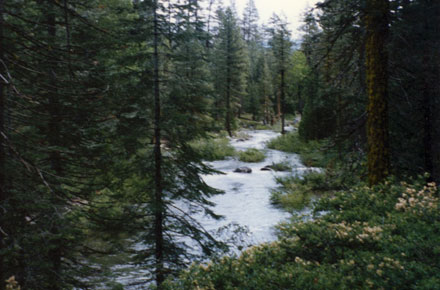In case you’ve never noticed, Yosemite National Park is surrounded by thousands of acres of beautiful National Forest Land and what happens to that surrounding forrest directly affects what happens in Yosemite that’s why a decision by a federal judge to continue prohibiting road construction in National Forrest comes as good news for for hikers, backpackers, fishermen, hunters, campers and about anyone who loves traipsing around in the back country.
The U.S. 10th Circuit Court of Appeals in Denver released a decision Friday to back a federal rule implemented at the end of Bill Clinton’s presidency knows as the “roadless rule.”
The policy set aside about 58 million acres of undeveloped forest, a little less than a third of the country’s national forest land, leading to a legal battle between states, logging interests and environmentalists that continues today.
But a local forest official says the decision and ongoing courtroom fight will not have much of an effect on future plans for the Stanislaus National Forest.
John Maschi, a forest planner with the Stanislaus National Forest, said the U.S. Forest Service manages the woodland under a plan put together in 1991 that pretty much goes “hand-in-hand” with the roadless rule. The Washington, D.C., office has not given Stanislaus officials any notice on how the decision might change their forest management policies, and Maschi said he doesn’t expect any changes.
“We don’t have any plans for implementing any projects that would be affected by the roadless rule or the court ruling,” he said.
Approximately 236,000 acres of the 900,000-acre Stanislaus National Forest is designated as a roadless area. Approximately 100,000 acres of the roadless area is also designated wilderness, leaving about 136,000 acres of non-wilderness forest roadless.
The non-wilderness land does not have the same level of restrictions as wilderness land, and the Forest Service can allow some motorized use on trails, use existing roads, remove trees for forest health or fire issues and conduct other minor uses, Maschi said.
“These areas are vital for protecting watersheds, providing recreation and hunting and fishing opportunities,” a statement from the Forest Service states.
(vía UnionDemocrat.com)
Photo by Loyd Schutte.

